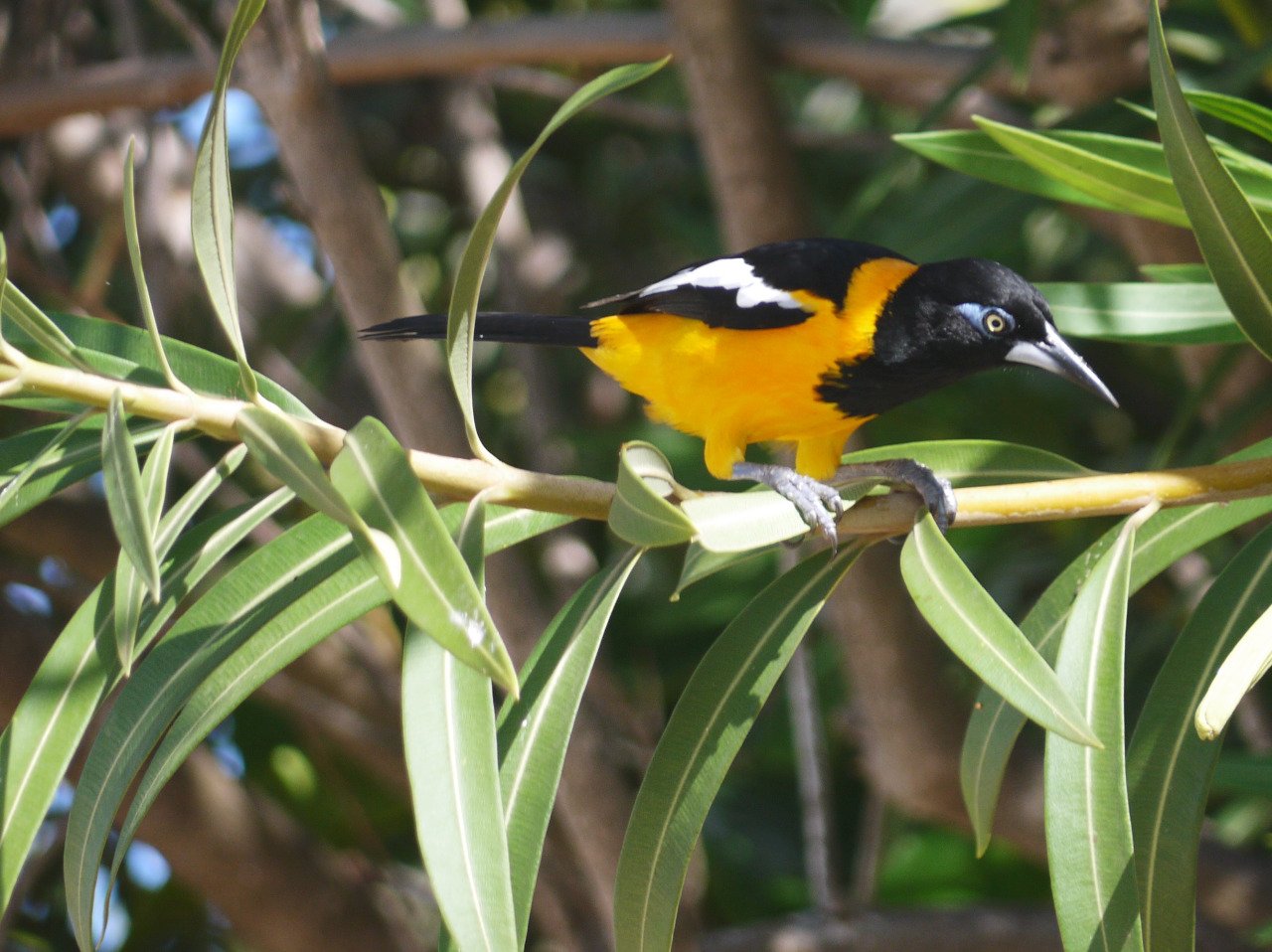
I remember the very first time I saw the national bird of Venezuela. Out of the corner of my eye, I caught sight of a flash of orange disappearing behind a thick layer of tree leaves. Peering upward, I marveled at the stark contrast between the inky black and bright orange feathers, white wing-bars glowing in the general shade of the canopy. There was no mistake: I was looking at a Venezuelan Troupial.
The Venezuelan Troupial has a large range, and can be found in Venezuela (obviously), Colombia, Trinidad and Tobago, and a number of Caribbean Islands. It was introduced to Puerto Rico and other island nations, and now flourishes.

Venezuelan Troupial
In addition to striking feather patterns, the troupial is set apart from other oriole species in a variety of ways. For example, it is a big, bulky bird, with a bright yellow eye and a “patch of bare blue skin behind the eye.” Instead of building its own nest, the troupial uses old nests from other birds. In fact, they can be quite violent when intent on taking over a nest.
When searching for a Venezuelan Troupial, look for woodland areas or open savannahs, where they search for insects, fruits, and eggs. They are partial to edge habitat, but can also be found in fruit plantations and gardens. Unfortunately, their propensity to feed on fruit has led them to be labeled as “pests.”
While their orange and black colors are impressive, troupials are also known for their song. The males are especially loud in the early morning, and unlike other oriole species, sing using “long, loud, repetitive notes.”
Overall, the Venezuelan Troupial is at a low risk for extinction. Though capture for the pet trade has reduced their numbers in some areas, they are protected in Venezuela due to their status as national bird.











Leave a Comment